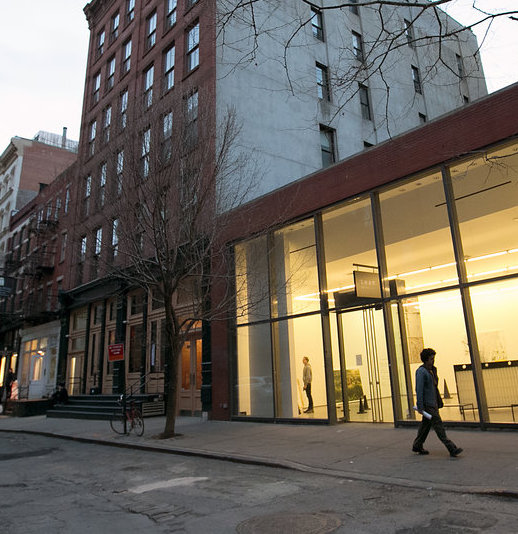Down, but not out

The economy has been stagnant for the vast majority of people for decades now—wages have stalled since the mid-70s, as profits and productivity have never stopped climbing. This long-term decline has been disguised by the dot.com mania and the real estate bubble, and the current, overheated stock market. As people point to traditional, superficial indicators of growth, and the media fails to explore what’s actually happening economically for most people. This makes it hard to connect the dots and understand why many galleries are struggling and some going under. It seems only the wealthiest have money to spend on art, and most of it is going to the highest end—in other words, the “brand” mentality governs spending, with people buying work at higher-priced work that seems more assured of rising in value. The dubious assumption behind all this is that the current art market actually prices work according to its actual value as art rather than as a predictable investment.
Nan Miller recently announced she was finally, really, closing her gallery here in Rochester, NY, after years of appearing to be going out of business and selling work accordingly. For years now, the Oxford Gallery, where I exhibit, has been offering work at a discount during the summer in order to stimulate sales, and Jim Hall’s inventory of 19th century American art has become more difficult to sell in recent years. None of this has to do with the quality of the work itself.
Bill Santelli and I were discussing all this yesterday when he got a notice of yet another gallery closing in Europe: “Freymond-Guth, the art gallery founded by Jean-Claude Freymond-Guth in Zürich in 2008, is abruptly closing (after being) named as one of 11 young dealers revitalizing their local art scenes earlier this summer.”
The site published a farewell letter sent to the owner’s mailing list. Here are excerpts:
Much has been said about how the art world has changed in the last years. I will not repeat it here. The consequences for art in an increasingly polarizing society ultimately built on power, finance and exclusion are clear. What I would like to address though . . . is a sentiment (best) described as alienation. Alienation in all relationships between all participants. Alienation in a climate where space and time for reflection, discussion and personal identification with form and content of contemporary art have become incompatible with the ever growing demand in constant, global participation, production and competition.
I fear the loss of friendship, community and recognition. I fear the results of the breakdown of a business, and the monetary loss my decision today causes some of my dearest collaborators. I fear the void that will replace the structure I have built with every element of my life in the last 10 years or more. When people asked me in the past years how I was, I used to joke: “Never been this old, fat and broke before!“. Well, it’s quite true now.
Why are we all supporting a system built in an entirely different market that today works only for a tiny amount of artists and galleries . . .
If we consider ourselves to be part of a free world and art being one of its great achievements, how can we accept structures that are so contrary to the idea of freedom on a most personal level?
Though much has been said about the conflicts of a contemporary art world . . . I trust this current state of crisis and confusion bares an immense potential for invention. My personal decisions are certainly made around that. In that sense Freymond-Guth Fine Arts will continue its mission long after the current form.
Jean-Claude
Some of us—most probably—have insulated ourselves from these larger economic realities by working for income in other ways, in my case by writing, though most artists choose to teach in order to pay the bills. But it doesn’t insulate us from the discouragement that comes from constantly struggling to find people who not only love what we do but have the means to own it. Bill and I were lamenting how no one is investigating, in an in-depth way, why all this is happening, but in fact the New York Times published a fairly good short piece on what’s happening earlier this summer.
And rather than visiting individual galleries — and perhaps discovering new talent — collectors are focusing on market-tested trophy works carried by major dealers; are sometimes buying from Instagram or other online (sources) without seeing the work in person; and are less willing to gamble on the emerging artists represented by small and midsize galleries.
The statistics bear this out. According to the art economist Clare McAndrew’s Art Basel-UBS art market report, dealers with (sales) of less than $500,000 saw their sales decline by 7 percent in 2016; dealers with (sales) of $500,000 to $1 million had a decline of 5 percent.
By contrast, those with (revenue) of $1 million to $10 million saw sales rise by 7 percent; galleries with sales of $10 million or more grew by 2 percent; and dealers with business above $50 million saw their sales increase by a whopping 19 percent.
In other words, what’s happening on a macro-level, economically, is happening within the world of art—which is hardly a surprise, since art has generally been expensive and within reach only for those who have discretionary money. The big difference is that now we don’t have a thriving middle class, where people who see their incomes rising want to spend it in a worthwhile way.
Comments are currently closed.